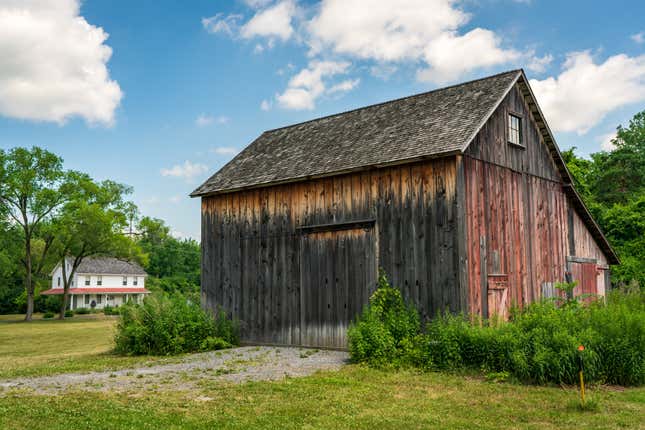
The United States is a country that boasts a famously diverse expanse of terrain, with spectacular natural wonders like canyons, mountains, forests and prairies dotting the landscape. Unfortunately, very few African Americans explore the country’s wilderness through the U.S. national park system. According to the National Park Service data from 2009, only about seven percent of visitors to the 419 national parks identified as Black. The systemic racism that affects all aspects of American life certainly influences these low numbers but also economic accessibility and a long history of violence targeting African Americans in this country’s woodlands also play a role.
Connecting with nature is important for overall health—and despite the propaganda, African Americans have cultural ties to many national parks. Groups like Outdoor Afro and Diversify Outdoors are reclaiming our presence in the wilderness and the National Park Service has stepped up efforts to attract people of color. After almost two years cooped up because of the pandemic, there’s never been a better time for an outdoor adventure, so check out these four national parks connected to Black history.
Harriet Tubman Underground Railroad National Historic Park (Maryland)
Traverse the same fields, marshes and waterways that the great African American icon and activist Harriet Tubman walked at the 480-acre Harriet Tubman Underground Railroad National Historic Park. The visitor center serves as the main hub, with exhibits, audio visual programs, an information desk and research library tracing Tubman’s life. Learn about the landscapes and waterways that she followed as a freedom fighter and then head out on a scenic driving tour of the Harriet Tubman Byway, a collection of 30 sites that include the Harriet Tubman Museum and Educational Center; Brodess Farm, where she spent her early years; and Tubman- Garrett Riverfront Park, which honors two of the Underground Railroad’s most fearless conductors. A map and driving guide outlines the self-guided tour and this free audio guide highlights some of the history.
Nicodemus National Historic Site (Kansas)
Visit the only remaining western town founded by African Americans during the Reconstruction period at Nicodemus National Historic Site. Established in 1877 by freed people migrating west from Kentucky, Nicodemus sits on the plains near the Solomon River in the northwest corner of Kansas and was named for an enslaved African prince who famously purchased his freedom. During the 19th century, Nicodemus was one of the most legendary Black communities in the country, noted for its prosperity, Black-owned farms, bank, and two newspapers. The frontier town’s most prominent citizen was Edwin McCabe, who was elected Kansas state auditor in 1882. Blizzards destroyed the town’s wheat crops in 1885 and then railroads bypassed it, which led to its decline but a handful of people (11) still live in Nicodemus today.
Start at the Nicodemus Township Hall and Visitor Center and view exhibits, videos and the park store. Five historic buildings, including the town hall, St. Francis Hotel, Old First Baptist Church, AME Church and schoolhouse make up the historic site. A tour of the town led by descendants of the original settlers and ranger led walks are available but call ahead. The park is a featured stop on the Kansas African American History Trail, which includes seven other sites.
Sequoia & Kings Canyon National Parks (California)
They call it the land of giants; towering trees and massive canyons make Sequoia & Kings Canyon National Parks a natural standout but this popular landmark also carries some overlooked Black history. In 1889, Charles Young was the third African American to graduate from the U.S. Military Academy at West Point. In 1903, while he was serving as captain for an all-Black regiment at San Francisco’s Presidio, he was asked to take his troops to the mostly undeveloped Sequoia National Park and General Grant Grove (what is now Sequoia and a portion of Kings Canyon National Park) He became the first and only African American superintendent for the park and his distinguished troops of the 9th cavalry were known as the Buffalo Soldiers. Park management was allocated to the U.S. Army and for three summers, Captain Young and his Buffalo soldiers patrolled the parks and oversaw construction of roads that would allow mass tourism in the parks.
The nearby town of Visalia wanted to honor Young’s work by naming a sequoia tree after him but he demurred. He insisted that there were more worthy candidates like Booker T. Washington but if they hadn’t changed their minds after 20 years, then they could dedicate a tree in his name. Today, you can view the Charles Young Tree along the Crescent Meadow/Moro Rock Road, directly across from the Booker T. Washington Tree. You can also hike, backpack or drive through sequoia groves, and gawk at the world’s largest trees. Rock climbing, observing wildlife and exploring the underground Crystal Cave are other options.
George Washington Carver National Monument (Missouri)
Authorized by congress in 1943, the George Washington Carver National Monument was the first national monument dedicated to an African American and the first to honor someone other than a president. A scientist, educator and humanitarian, Carver discovered hundreds of uses for peanuts, soybeans and sweet potatoes. The monument preserves his birthplace and legacy with 240 acres that features his childhood home, a three-level museum, a mile-long nature trail and visitor center. Don’t miss the park film, Struggle and Triumph: The Legacy of George Washington Carver for an inspiring account of his life.